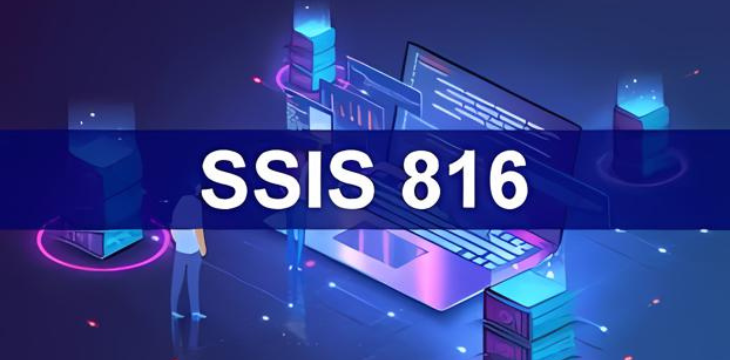So, you’ve heard the buzz about SSIS 816 and are wondering what all the fuss is about? You’ve landed in the right spot! Today, we’re unraveling the mysteries of SSIS 816’s, exploring why it’s got everyone talking in the world of data integration and transformation. This isn’t just another techie mumbo jumbo—this is where data magic happens!
Picture this: you’re at a bustling marketplace, each stall brimming with tantalizing data morsels. Your mission? To bring all these scattered pieces together into a coherent, delicious dish. SSIS 816 is your trusty chef’s knife, ready to slice, dice, and blend your data into something truly remarkable. Ready to dive in? Let’s get cooking!
What Is SSIS 816?
SSIS 816: The Basics
Alright, let’s cut through the jargon. SSIS stands for SQL Server Integration Services. Now, slap a “816” on it, and you’ve got a specific version or build of this powerful tool. But why does it matter to you? SSIS 816’s is like the upgraded sports car of data integration—faster, sleeker, and packed with features that make data management a breeze.
Here’s a quick breakdown of what SSIS 816 offers:
- Enhanced Performance: Imagine speeding down the highway with a turbo engine—that’s what SSIS 816 does for your data processes.
- Advanced Data Transformations: From basic sorting to complex calculations, it’s got the tools to handle any data makeover.
- Improved Connectivity: SSIS 816 connects to various data sources like a pro, ensuring your data flows seamlessly from one place to another.
Why SSIS 816 Matters
In today’s data-driven world, efficiency and accuracy aren’t just nice-to-haves—they’re essentials. SSIS 816 enhances these aspects by providing robust solutions for data integration and transformation tasks. Whether you’re managing big data or just ensuring your daily reports are up-to-date, SSIS 816’s simplifies the process and boosts productivity.
Getting Started with SSIS 816
Installation and Setup
Before you can take SSIS 816 for a spin, you’ll need to get it up and running. Here’s a step-by-step guide to help you get started:
- Download the SSIS 816 Package: Head over to the official website or trusted source.
- Run the Installer: Follow the prompts, and you’ll be set in no time.
- Configure Your Environment: Adjust settings to fit your specific needs and data sources.
Basic Configuration Tips
Getting SSIS 816’s up and running is just the beginning. To make the most of it, consider these configuration tips:
- Set Up Data Sources: Connect your various data sources to SSIS 816’s to streamline your data flow.
- Customize Transformations: Tailor transformations to fit your data needs, ensuring accurate and efficient processing.
- Monitor Performance: Keep an eye on performance metrics to make adjustments and maintain optimal efficiency.
Key Features of SSIS 816
Data Flow Tasks
SSIS 816’s excels at handling data flow tasks. Here’s a quick look at some of its standout features:
- Data Extraction: Pull data from various sources like SQL databases, Excel files, and more.
- Data Transformation: Cleanse, aggregate, and convert data to fit your needs.
- Data Loading: Load transformed data into your destination system with ease.
Control Flow Tasks
Control flow tasks are where SSIS 816’s truly shines. They help orchestrate the entire data integration process:
- Task Sequencing: Arrange tasks in the order they need to be executed.
- Error Handling: Implement error handling mechanisms to deal with any hiccups along the way.
- Event Handling: Define actions based on events, such as task completion or failure.
Best Practices for SSIS 816
Optimize Performance
To ensure SSIS 816’s runs like a well-oiled machine, follow these best practices:
- Minimize Data Transformations: Keep transformations to a minimum to speed up processing times.
- Use Buffering Wisely: Properly configure data buffering to handle large volumes of data efficiently.
- Regular Maintenance: Periodically review and optimize your SSIS packages to maintain peak performance.
Security Considerations
Security is crucial in data integration. Here’s how you can keep your SSIS 816’s environment secure:
- Secure Data Connections: Use encrypted connections for data transfers.
- Restrict Access: Limit access to SSIS 816’s to authorized users only.
- Monitor for Vulnerabilities: Regularly check for and address any security vulnerabilities.
Troubleshooting Common Issues
Even the best tools can encounter problems. Here’s how to tackle some common issues with SSIS 816’s:
Error Messages
- Error: Connection Failed: Double-check your connection settings and ensure that your data sources are accessible.
- Error: Package Execution Failed: Review your package configuration and check for any missing components.
Performance Problems
- Slow Data Processing: Review your data flow tasks and consider optimizing transformations or increasing buffer sizes.
- High Memory Usage: Monitor memory usage and adjust SSIS package settings to reduce memory consumption.
FAQs
What Is SSIS 816 Used For?
SSIS 816 is used for data integration and transformation. It helps you extract, transform, and load data from various sources into your target systems.
How Do I Upgrade to SSIS 816?
To upgrade, download the latest version from the official site and follow the installation instructions. Ensure that your current data packages are compatible with the new version.
Can I Use SSIS 816 with Non-Microsoft Data Sources?
Yes, SSIS 816 supports a range of data sources beyond Microsoft products, including Oracle, MySQL, and more. Check the documentation for specifics on supported sources.
Conclusion
And there you have it—the lowdown on SSIS 816! From installation to advanced features, this guide has covered everything you need to know to make the most of this powerful tool. SSIS 816’s isn’t just about handling data; it’s about transforming it into something truly valuable and actionable.
So, whether you’re a seasoned pro or just dipping your toes into the world of data integration, SSIS 816’s is here to make your life a whole lot easier. Happy data transforming!
